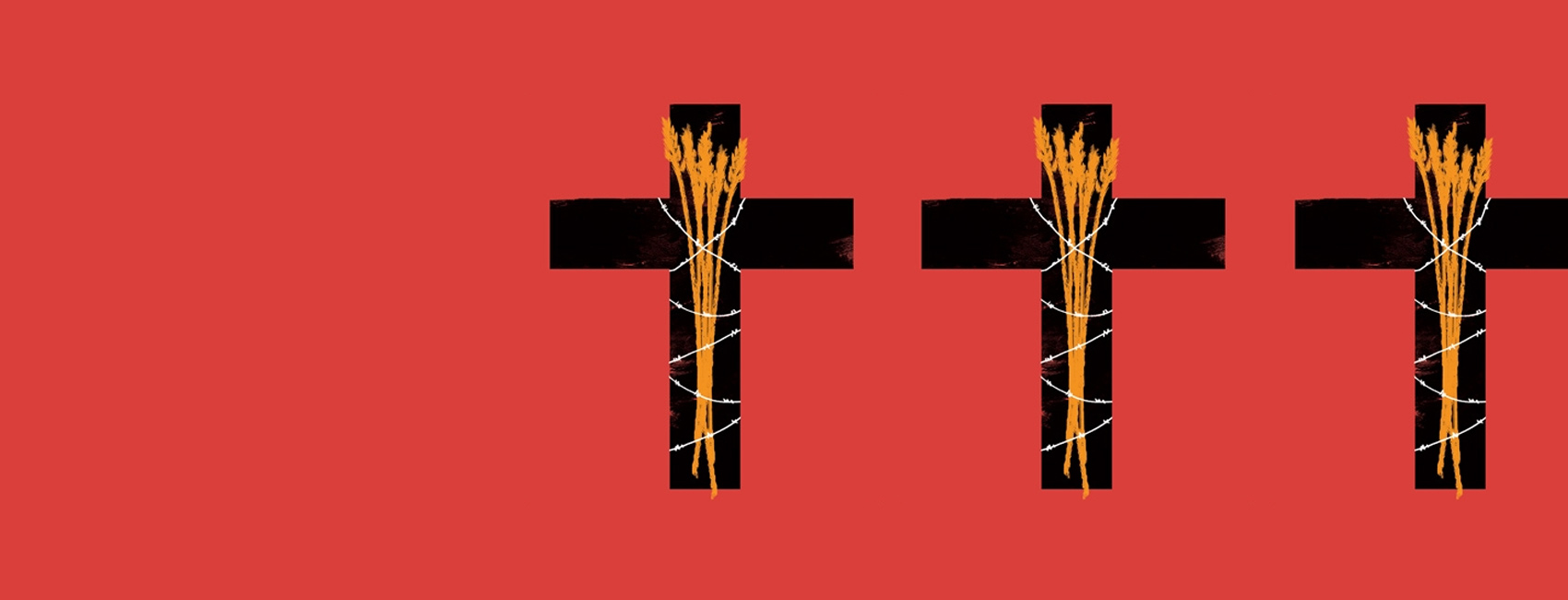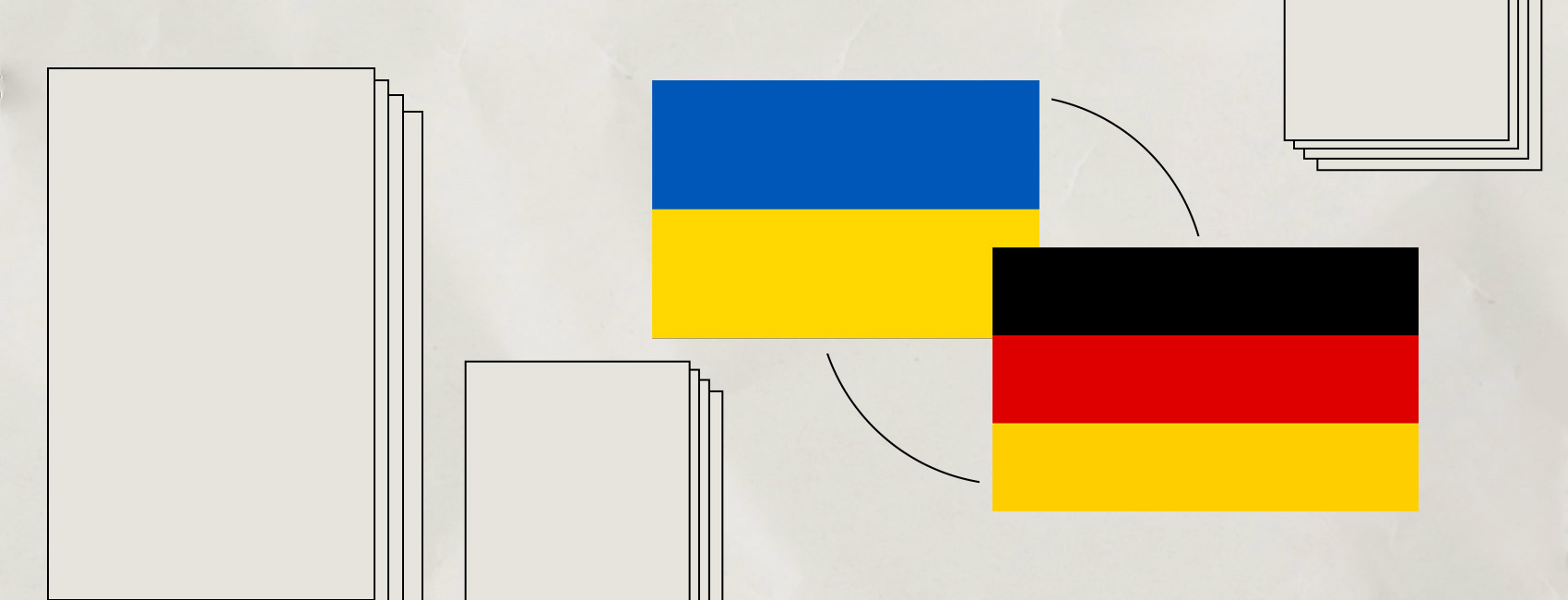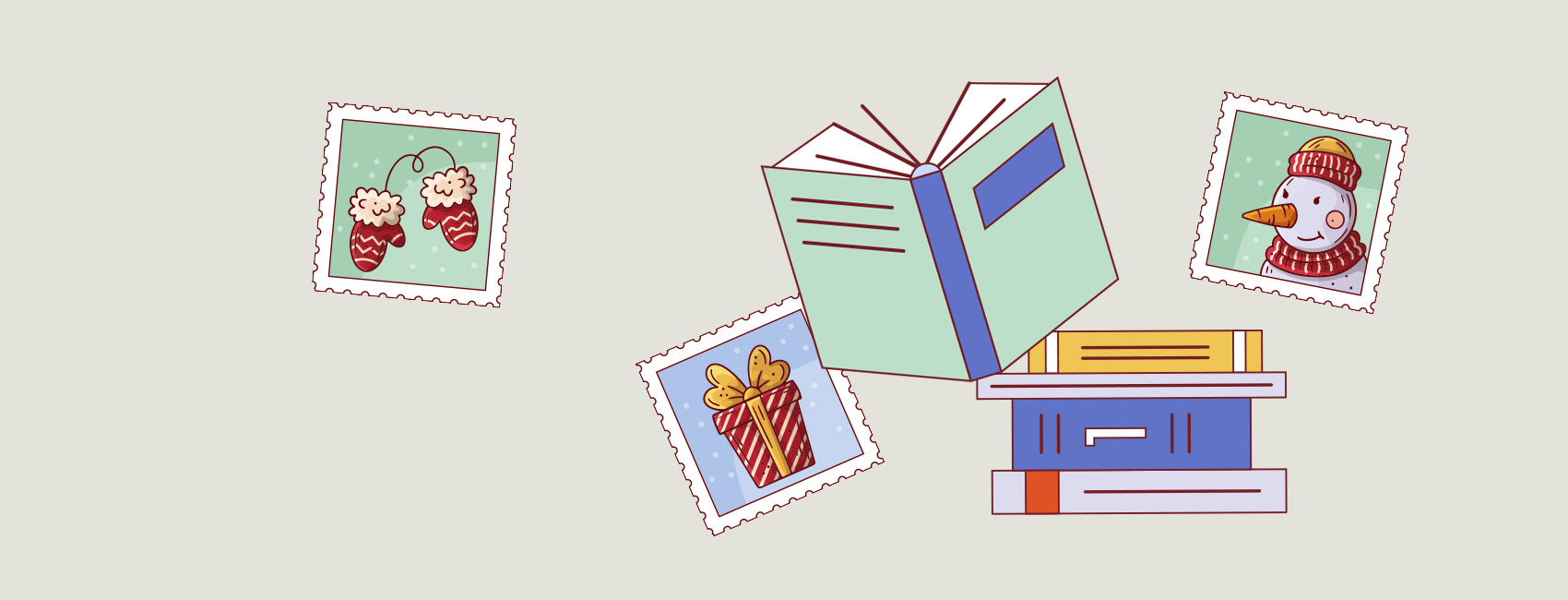* ESC - close the search window
ambassadors
Charlotte Higgins: Understanding Ukraine through its cultural expressions is vital
15.11.2024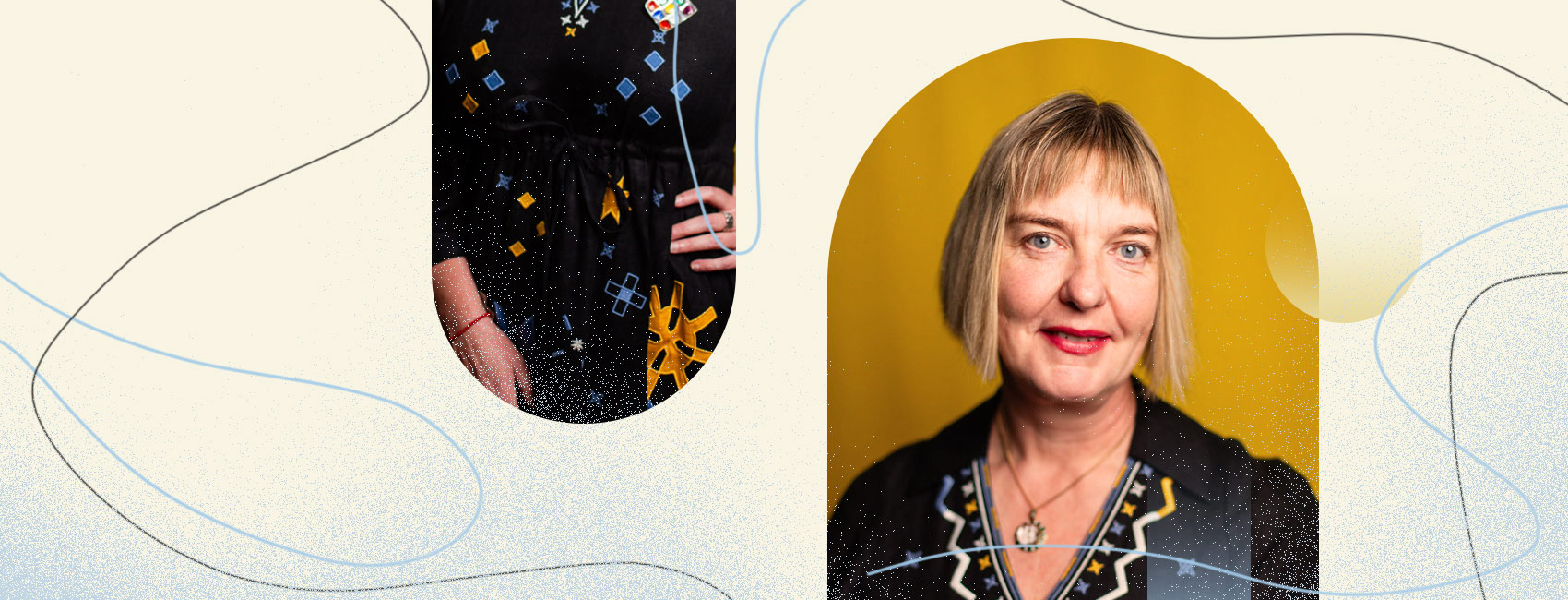
Amidst the bustling panels of the 31st Lviv Book Forum, I have the pleasure of sitting down with Charlotte Higgins, a prominent cultural journalist and the chief culture writer for The Guardian, at the iconic Lviv restaurant Atlas — a beloved meeting place for Ukrainian artists.
Dressed in a stunning black vyshyvanka from Etnodim that organically complements her style, Charlotte tries to order a traditional Lviv syrnyk (cheesecake) in Ukrainian — and succeeds — setting the tone for a delightful conversation.
“I don’t see myself as an ambassador,” Charlotte firmly begins. “This is far from my reality as a reporter. My role is to engage with people, try to understand their experiences, and convey those insights to The Guardian’s British and global audience.”
As we chat, it becomes clear that Charlotte’s passion for Ukrainian culture extends far beyond mere appreciation; she embodies a genuine curiosity and commitment to understanding its nuances. She has immersed herself in literature, art, and traditions over the past two years, becoming a vital voice in bridging cultural gaps between Ukraine and the wider [English-speaking] world.
Chytomo: How do you perceive the war’s impact on British audiences’ understanding of Ukrainian culture? Could you also share your thoughts on its relevance to English-speaking audiences, particularly in the context of your experiences in the UK?
Charlotte Higgins: Let me start by speaking personally. Before the full-scale invasion of Ukraine, my knowledge of Ukrainian culture was more than limited. As a reporter, I’ve always believed in the power of examining situations through a cultural lens, alongside the conventional political, economic, and social perspectives. This has sometimes felt like an uphill struggle: Arts and cultural journalism has often been seen as supplementary rather than integral to understanding historical moments.
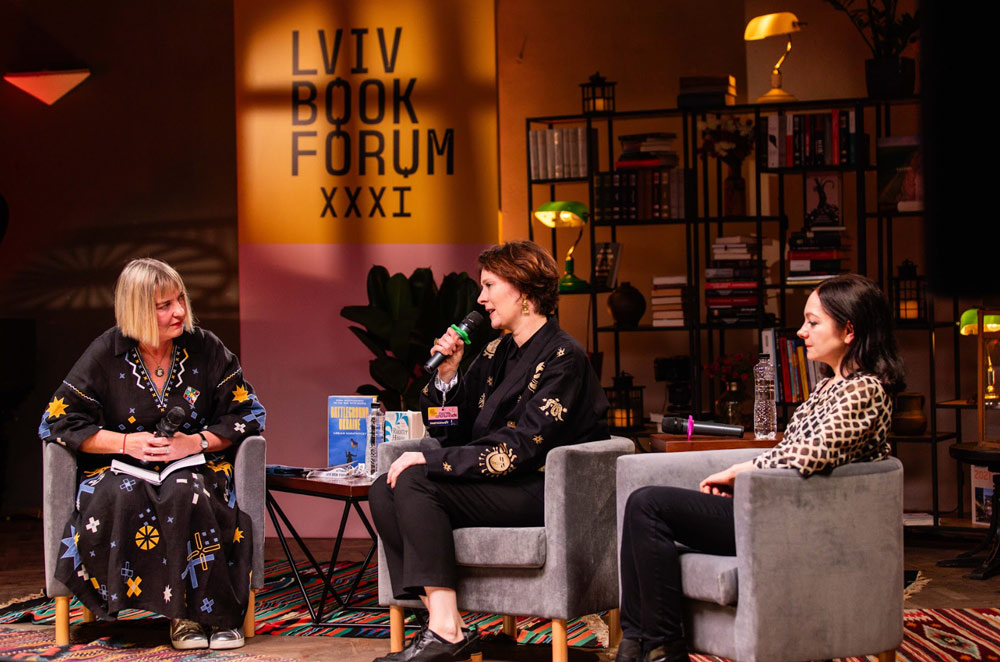
The full-scale invasion of Ukraine in 2022 marked a turning point. At the Venice Art Biennale that year, I met Pavlo Makov, Ukraine’s representative. The contrast was stark — an empty Russian pavilion juxtaposed with a strong Ukrainian presence. My conversation with Makov was transformative. He gave me a crash course in Ukrainian culture and the concept of decolonization in a Ukrainian context.
This experience reinforced my belief in culture as a crucial lens for understanding complex situations. Inspired by this encounter and encouraged by a colleague, I pitched an article exploring how Ukrainian artists were responding to, documenting, and resisting the war through their work. Doing this work was really a new chapter for me in beginning to explore Ukraine’s rich cultural landscape.
Chytomo: Did that meeting encourage you to visit Ukraine personally?
Charlotte Higgins: I arrived in Kyiv in October 2022, just as cruise missile attacks began — a true baptism by fire! Though I’m not a war reporter, that day forced me into that role. Since then, I’ve returned multiple times, driven by the belief that understanding Ukraine through its culture is vital. I’ve been very lucky to be supported in this by The Guardian: It is extremely unusual, possibly unique, for a news organization to send a culture journalist to cover a war, but my editors have embraced the perspective of my reporting as something that can enrich the excellent work of my colleagues that’s more focused on the front line.
RELATED: ‘People who go into battle with a joke on their lips’: Interview with Boris Dralyuk
I’ve transitioned from near-total ignorance to a deeper awareness through these trips, and I hope to have brought some Guardian readers along on this journey. From that first visit — where the goal was to write a single article about artists’ responses to the Russian invasion — I’ve now written many pieces exploring, among other things, the struggle to protect Ukrainian cultural heritage, the blossoming of Ukrainian poetry, the way some of the more complex and difficult aspects of war are being reflected in plays, the debates around decolonization, and much more. I’ve interviewed extraordinary people: We traveled to Sloviansk to interview filmmaker and journalist Mstyslav Chernov; to the area around Izyum to speak to the family of the murdered writer Volodymyr Vakulenko; and I’ve slightly fallen in love with Kharkiv, where I’ve spent time with remarkable people such as Tetiana Pylypchuk, the director of the Literary Museum.
When I say “we,” this is really important: I can’t do my journalism in Ukraine alone, and aside from my supportive editors in London, I work very closely with a brilliant colleague here in Ukraine, The Guardian’s translator and producer Artem Mazhulin, who is the backbone of The Guardian’s work reporting on the war. Recently I have also been collaborating with one of Ukraine’s truly great photographers, Julia Kochetova, one of the 2024 World Press Photo winners.
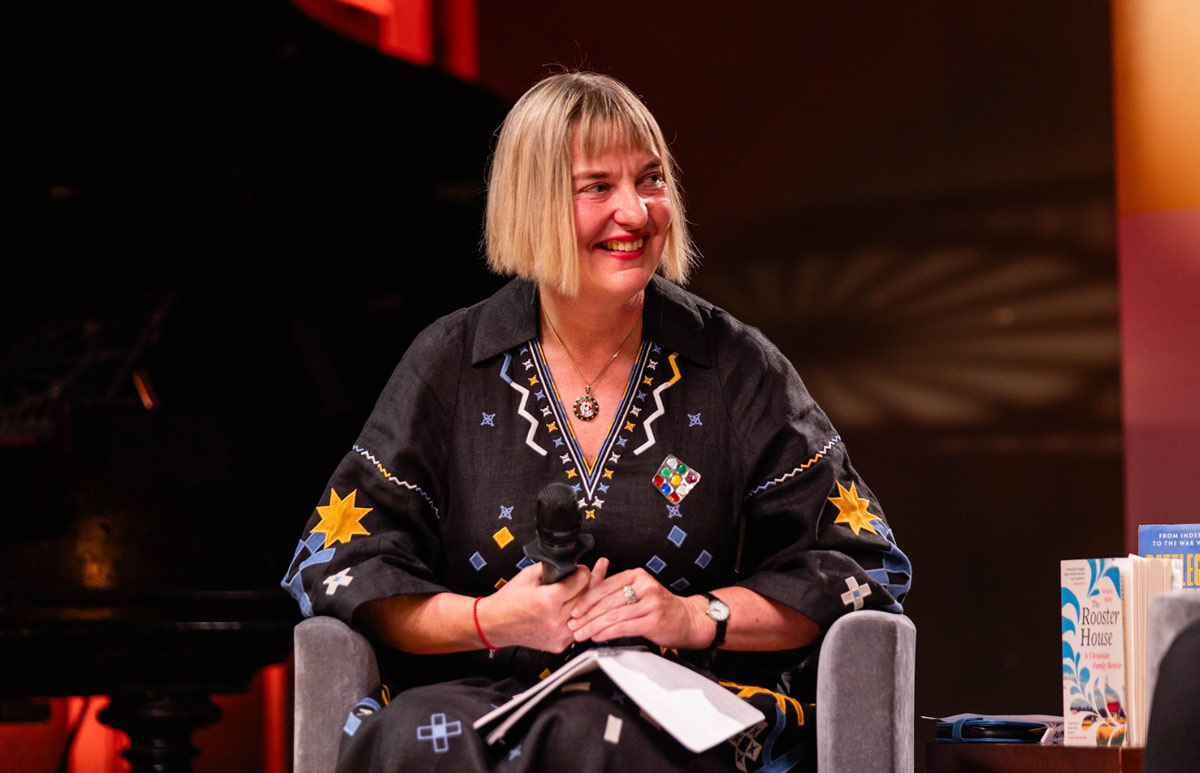
Chytomo: What impressed you most upon your arrival in Kyiv, aside from the missile attacks?
Charlotte Higgins: I came to Kyiv for the first time on a momentous and awful day. After three days at the Lviv Book Forum, I arrived by overnight train in a city I’d never seen before. Then an unexpected, large missile attack shattered the relative calm that had prevailed for some time.
The shock was palpable, not just for me, obviously, but for everyone in Kyiv. In this surreal context, I found myself interviewing artists, and what struck me the most was their resilience — their ability to create amidst such chaos.
I remember, for example, visiting Oleksiy Sai, a brilliant artist. He had recently completed a video work destined for display at NATO headquarters, the British Parliament, Davos, and other “official” locations. It was a haunting collage of countless war images. Watching Oleksiy, I struggled to comprehend what it must be like to immerse oneself in such harrowing imagery day after day. For him, this wasn’t art in the traditional sense, but a purposeful creation aimed at persuading, reminding, and revealing the war’s horrors to the world. I was overwhelmed by a mix of admiration and profound sadness. The thought that anyone should have to create work about such violence was heartbreaking.
Chytomo: What was your first deep learning about Ukrainian culture and its representatives?
Charlotte Higgins: I think for me the first deep learning was that Ukrainian culture was so often a history of erasure — from Taras Shevchenko’s exile to Alla Horska’s murder to Parajanov’s imprisonment to Vasyl Stus’s death in the gulag. And of course the appalling killings of the 1930s. The scale of it is so hard to comprehend.
Chytomo: How will maintain that interest without losing momentum?
Charlotte Higgins: I’m not going to lose interest anytime soon. Despite the repressions and erasures, there is a massive world of Ukrainian culture for me (and, I hope, my readers) to discover.
I want to go deeper and learn more and more. I’m learning Ukrainian — but it’s slow.
Chytomo: And your “syrnyk” pronunciation was great! But not everyone has an experience of presence, so we need to find a way to build it. What would you consider “low-hanging fruit” for promoting Ukrainian culture abroad?
Charlotte Higgins: In a way, it should be simple: getting brilliant Ukrainian movies into cinemas. Getting Ukrainian plays onto the stage. Identifying the best of Ukrainian literature and working to get it translated. All this is easier said than done, I realize. I’ve seen so many fantastic exhibitions of contemporary Ukrainian art in Ukraine, and I would love to see more of that work make its way to the UK: artists such as Zhanna Kadyrova, Andrey Rachinsky and Danilo Revkovsky, Dasha Chechushkova, Katya Buchatska, Open Group, Bohdan Bunchak… these names are just the tip of the iceberg. However, it’s challenging when British curators cannot visit Ukraine due to war events and budget constraints; it’s very hard for that process to get underway properly. That said, there was a substantial Ukrainian visual art program in Liverpool in 2023 when the city hosted the Eurovision Song Contest on behalf of Ukraine, for example.
One area where I’ve seen some good representation is Ukrainian photography in the UK. For instance, one of the curators at Open Eye Gallery in Liverpool is Max Gorbatsky, who co-curated the Ukrainian pavilion at the 2024 Venice Biennale with Viktoria Baykina. I recently saw a fantastic exhibition, Home, that they co-curated at Stills Gallery in Edinburgh. They brought together superb photography by figures from Alexander Chekmenev to work made during the full-scale invasion by Andrey Rachinsky.

Chytomo: Have you had the chance to visit the “Eye of the Storm” exhibition in London, by the way? It’s remarkable how perceptions have shifted. A decade ago, the term “Ukrainian modernism” was often met with confusion in Western cultural studies, frequently mistaken for Russian avant-garde. Today, it’s gaining the recognition it deserves. And it’s only the beginning…
Charlotte Higgins: This is a great example! Showcasing the “Eye of the Storm” in the Royal Academy of Art, a very prestigious institution, is already a significant step and milestone. It’s a beautiful and enriching show, and did a really great job at showing viewers this thing called “the Russian avant-garde” was not quite what they thought it was — or rather many of the artists they might have thought of as “Russian” were actually Ukrainian or Ukraine-born.
Having asserted this hitherto unknown concept, I wonder if now the next step is to show how artists often embodied multiple cultural identities and navigated complex political, social, and national affiliations. It’s complicated!
While I think of it, I mustn’t forget to say that a really important champion of Ukrainian culture in the UK is the Ukrainian Institute in London, led brilliantly by Olesya Khromeychuk. With a tiny team and very few resources, they punch way above their weight with a program of talks, events, film screenings, and more. But of course, they can’t put on full-blown plays at major institutions — and I’d so love to see Natalka Vorozhbit’s plays on stage in British theatres, and work by other Ukrainian playwrights, too. This can’t all be achieved by tiny, under-resourced organizations though.
RELATED: ‘In the Eye of the Storm. Modernism in Ukraine, 1900-1930s’: more than just a catalog
Chytomo: Are you making a point on governmental support here?
Charlotte Higgins: I’m an outsider, of course, and it’s up to Ukrainians what the Ukrainian government should do — but having said that, investing in cultural infrastructure, and promoting Ukrainian culture abroad, seems an obvious opportunity to me. It’s a a relatively low-cost thing to do that could foster greater sympathy and deeper understanding of and for Ukraine.
Regarding film funding, while I’ve encountered some remarkable Ukrainian films, I’m aware of the severe challenges within the industry. Many brilliant Ukrainian films haven’t reached UK audiences yet, possibly due to distribution issues or limited exposure. For instance, I’d love there to be a way for audiences to see Iryna Tsilyk’s “Felix and I” (which has an English-language title of “Rock, Paper, Grenade”) in the UK. It’s an incredibly sensitive film, rich with empathy, a piece of profound storytelling. I loved “Pamfir,” set in a village near the Romanian border. That certainly was seen in UK cinemas and was very well-received. Films can do so much to draw foreign audiences into Ukrainian worlds and Ukrainian storytelling. But for that to happen, great films first need to be made.
Chytomo: What about literature? Any recommended priorities here, especially after visiting the Lviv Book Forum?
Charlotte Higgins: I’m eager to see more high-quality translations, particularly of Ukrainian literature from the 1920s. I’d love to see Iryna Tsilyk’s latest poetry collection, “Thin Ice,” published in English, as well as Yaryna Chornohuz’s recent work. I’m grateful for Halyna Kruk‘s bilingual poetry volume, which offers parallel translations — Ukrainian on one side and English on the other. It’s thrilling to see that Uilleam Blacker’s translation of Maik Johansen’s “Dr Leonardo’s Journey” is soon to be published, and Nina Murray’s translation of Lesya Ukrainka’s “Cassandra” is already available: the pace is picking up.
New books written during the full-scale invasion are finding their way into English, such as Oleksandr Mykhed’s “The Language of War.” Victoria Amelina’s “Looking at Women Looking at War,” which she left unfinished when she was killed by a Russian missile last year, will come out in the UK next February. She wrote the book in English specifically to address a broad global audience, and it’s brilliant, though heartbreaking in its incompleteness. I’m eagerly awaiting her fiction being translated into English, which is in the pipeline — as is an English translation of Sofia Andrukhovych’s “Amadoka.” However, despite all the efforts, significant gaps remain.
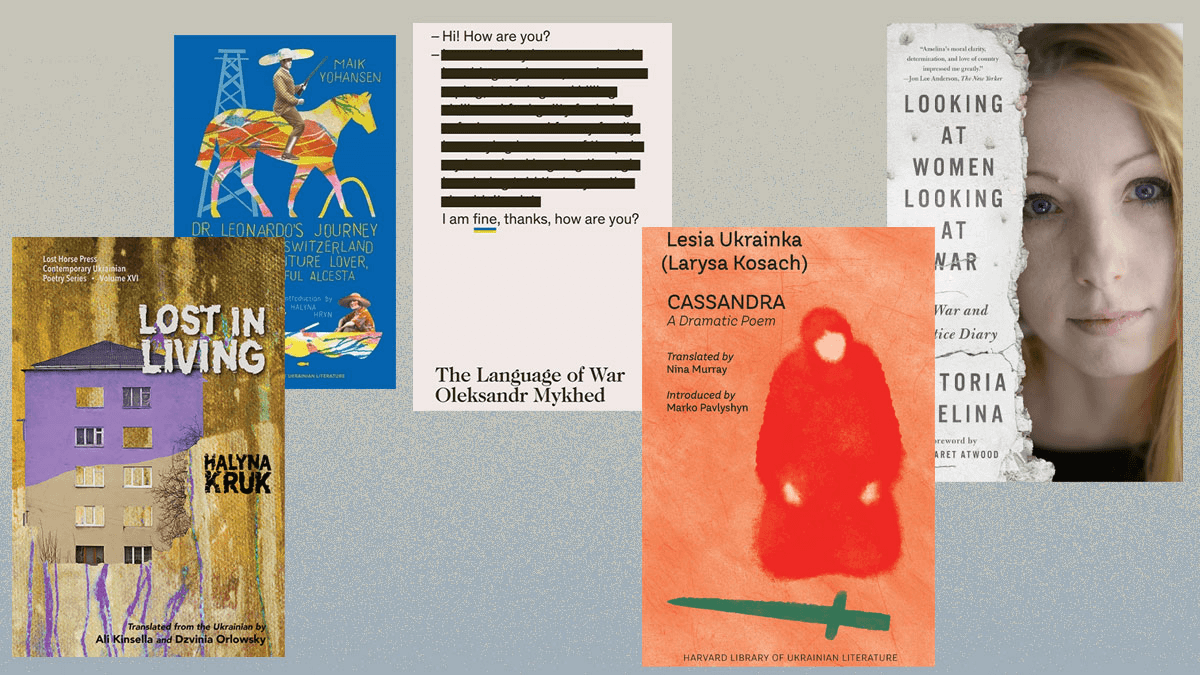
As a classicist by training, I’m particularly interested in reading Ivan Kotlyarevsky’s “Eneida,” but unless I’m not looking in the right place, I can’t find a great translation. Similarly, I’ve yet to discover a truly outstanding contemporary translation of Taras Shevchenko’s poetry. To my knowledge, these authors, unlike their Russian contemporaries, are not included in canonical series like Penguin Classics or Oxford World’s Classics.
In essence, if you can promote good pieces of Ukrainian art — regardless of genre — you can foster greater understanding and appreciation for Ukrainian culture.
Chytomo: I think that for us, we probably needed that external validation and recognition as a part of European heritage. I remember those times as a post-Soviet kid, raised in Soviet times and having gone to a Soviet school. I recall being taught that Ukrainian is a country village language. That obviously created for some of us this self-deprecating process, making us feel “not good enough.” We call it a cultural inferiority complex. It is what it is, and I think that this is a significant internal decolonization process we need to go through. So, when the play gets to the London theatre scene because it’s great, not just because it’s Ukrainian—it’s especially valuable.
Charlotte Higgins: I think that’s really important, and there is a plethora of great stuff to choose from. What I’m saying is that truly good art can do the job you’re suggesting, which is to explain Ukraine better to people — and it can do it without waving a yellow and blue flag. If it’s good art from Ukraine, then it will enrich people’s perspective. It doesn’t have to come with a compulsory message. In fact, it’s better if it doesn’t.
Chytomo: I’m very concerned that Ukraine will be constantly labeled with this “war sticker,” and I desperately want us to build a cultural agency that showcases our rich heritage. We have beautiful literature, new and some old pieces of impressive cinema, and a great theatre tradition. We simply want to demonstrate through it that we exist and express ourselves in our own way, nothing more than that.
When you visit Ukraine, what’s your favorite aspect of our country, despite all the war challenges?
Charlotte Higgins: Talking to people. There’s such a huge openness and generosity. As soon as I say that I’ve come to Ukraine to find out more about its art and culture, I’m almost invariably met with a huge openness and desire to help me. I love meeting extraordinary people and having mind-expanding, sometimes challenging, and incredibly enriching conversations.
So, definitely, conversations and people. But I need to confess that I am a greedy person, and I love Ukrainian food. But that’s part of culture too — of course people’s relationship with food is bound up in so many historical, geographical, and ecological factors, and there is so much to learn about Ukraine from thinking about its amazing produce, its agriculture, its cooking. In our team at The Guardian, we spend what is to me a delightful amount of time talking about where to eat—and a sustaining meal and an hour or so to relax is a human necessity if you are out on the road working hard. I love Trypichya in Kharkiv. U Sester near Poltava was recommended to me by no lesser personage than Oksana Zabuzhko. It’s now a regular lunch spot for me and my Guardian colleagues. Thinking about it now—even just their delicious, simple cabbage salad, leave alone the glorious kvas, the pampushky, the deruny—makes me feel hungry.
Chytomo: Ukrainian fashion is very ecological too, referring to your outfit.
Charlotte Higgins: Regarding fashion, I should have worn my Bevza earrings for you today — they are shaped like ears of corn, a lovely and subtle Ukrainian reference. I allow myself one small indulgence every time I come to Ukraine on the rather shaky grounds that it’s important to support the Ukrainian economy.
Chytomo: That’s exactly my position — I do all my clothes shopping here because Ukrainian designers are fantastic and offer unique, beautiful pieces. So, my suitcase is always full of books backed with a new little fashion piece.
Charlotte Higgins: Personally, I like to have a tiny memento from every trip. I’ve collected a couple of necklaces and a dress. The craftsmanship and the interesting reinvention of traditional vyshyvanky into a more modern aesthetic are something I can truly appreciate. And people can see and value it.
Chytomo: It’s fascinating, and you looked so organic, as if you were born for it!
Charlotte Higgins: I have to say, when I put on that dress… I would hate to give the impression that I spent my entire time in Ukraine shopping; that’s very far from the truth. But one day I was working with my photographer colleague Julia Kochetova, and we had a busy day in Podil. Between two appointments, we had literally 15 minutes; she dragged me into Etnodim, saying, “Charlotte, this is really important.” Julia was about to receive her World Press Photo award, so she bought a beautiful, very cool, green dress which she wore on one of the award evenings. I tried on a black dress with pale blue and yellow embroidery and thought, “OK, this dress is so comfortable, I feel so at home in it, I obviously have to buy it; I have no choice.” We were in and out of that shop within 10 minutes.
Ukraine offers so much more than its challenges; it’s a place where conversations flourish, the food delights, and creativity keeps thriving amidst adversity. I’m truly excited about all that I have yet to discover.
By the way, would you mind sharing your Spotify playlist? My workout music is now filled with Ukrainian bands as well…
The publication is a part of the “Chytomo Picks: New Books from Ukraine” project. The materials have been prepared with the assistance of the Ukrainian Book Institute at the expense of the state budget. The author’s opinion may not coincide with the official position of the Ukrainian Book Institute.
Team of authors: Olha Mukha, Nataliia Kushnirchuk
Photos: Nastia Telikova for Lviv BookForum
Copy editing: Joy Tataryn
Proofreading: Terra Friedman King
This publication is sponsored by the Chytomo’s Patreon community


